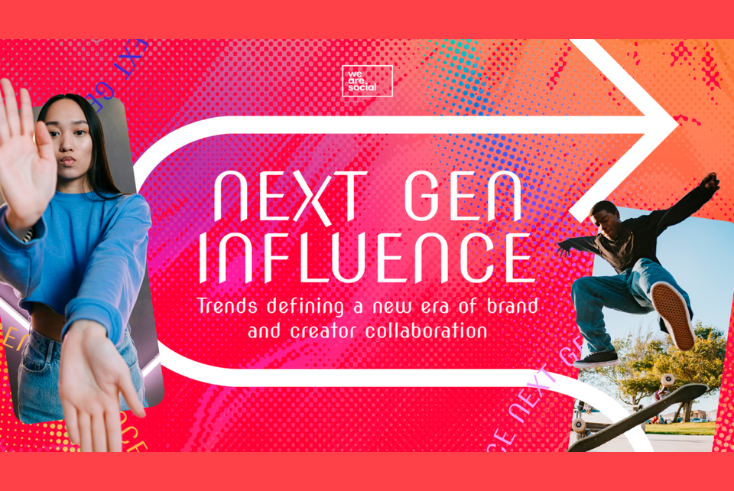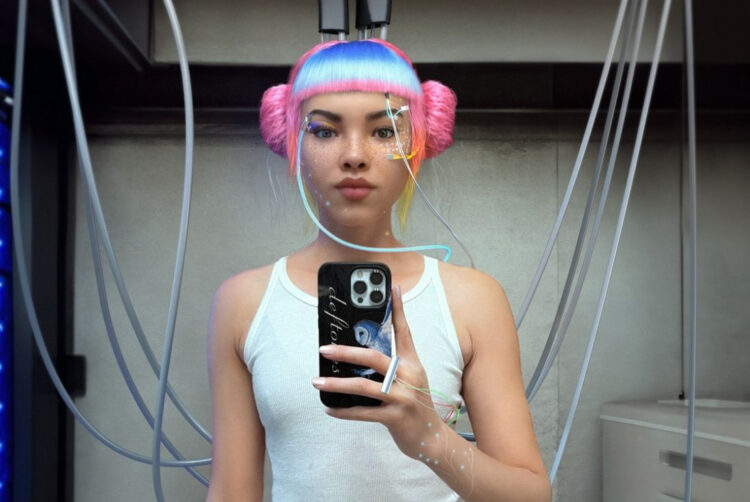Next Gen Influence: How brands can navigate the evolving creator landscape

Global socially-led creative agency We Are Social has released a new report, Next Gen Influence, outlining five key trends shaping the future of brand and creator collaborations. With the rise of a more discerning and demanding digital audience, the report offers valuable insights into how creators are capturing attention and what this means for brands looking to stay relevant in the evolving influencer economy.
Using a combination of quantitative and qualitative research, including cultural analysis and interviews, We Are Social highlights the strategies successful creators are using to connect with audiences—and how brands can leverage these insights to deepen their impact.
-
The right to reinvention
Creators are no longer defined by a single persona or life stage. Instead, they are constantly evolving, sharing their personal transformations in real-time. This trend of reinvention has become a hallmark of the modern creator economy, offering a powerful way to engage with diverse audiences.
For instance, Julie Vu, who gained fame as Big Brother Canada‘s first transgender houseguest, has built her brand around sharing her trans evolution, allowing viewers to follow her journey. Brands can harness this trend by recognizing that creators with dynamic, evolving identities offer deeper, longer-term engagement opportunities. By aligning with creators who reinvent themselves, brands can ensure they stay connected to the changing interests of their audience.
-
Relatable realism
Aspirational content has shifted focus from unattainable luxury to more grounded, relatable lifestyles. Audiences are drawn to creators who highlight simplicity, calmness, and stability, rather than excess and glamour. An example is @hart_of_shetland, a former city-dweller who now resides on the Shetland Islands, crafting ethically-made products and embracing a sustainable lifestyle.
Brands that adopt this approach can appeal to viewers seeking content that mirrors their everyday lives. By prioritizing realism over extravagance, they can create more authentic connections with their target audiences.
-
Influential Allies
Audiences are becoming increasingly skeptical of philanthropic gestures that appear performative. As a result, creators are shifting away from content focused on charity for the sake of attention, and instead, they’re tackling real societal issues and challenging the status quo.
Creators like Kahlil Greene, who uses TikTok to uncover forgotten historical truths, are examples of influential allies who engage audiences through impactful and educational content. Brands looking to connect with socially conscious consumers can partner with such creators to showcase authentic commitment to important causes, building trust with their audiences.
-
Credible creativity
As the digital space is flooded with content, standing out requires creativity that feels authentic and engaging. Creators are pushing the boundaries of what is considered traditional marketing by adopting communication styles that resonate with their audience—humor, entertainment, and “very online” content are becoming more important than ever.
A notable example is the collaboration between Marc Jacobs and @sylvaniandrama, where creativity and storytelling were key to success. Brands should take note of this trend by embracing the unique communication styles of creators, ensuring that their campaigns feel relevant and relatable to today’s audience.
-
Extreme influence
In a world overflowing with fast-paced, fleeting content, the next generation of creators is turning to extreme and unusual strategies to stand out. Pushing boundaries is becoming the norm, with creators like Max Webb using daring, attention-grabbing tactics to differentiate themselves from the competition.
For brands, the takeaway is clear: in order to make a lasting impact, they must be willing to step outside of traditional marketing methods and embrace bold, unconventional approaches. Extreme influence offers the potential for higher engagement, but only if executed thoughtfully.
By understanding and embracing these shifts, brands can foster deeper, more meaningful collaborations that drive real impact in an increasingly competitive digital space.

À lire plus tard
Vous devez être inscrit pour ajouter cet article à votre liste de lecture
S'inscrire Déjà inscrit ? Connectez-vous









